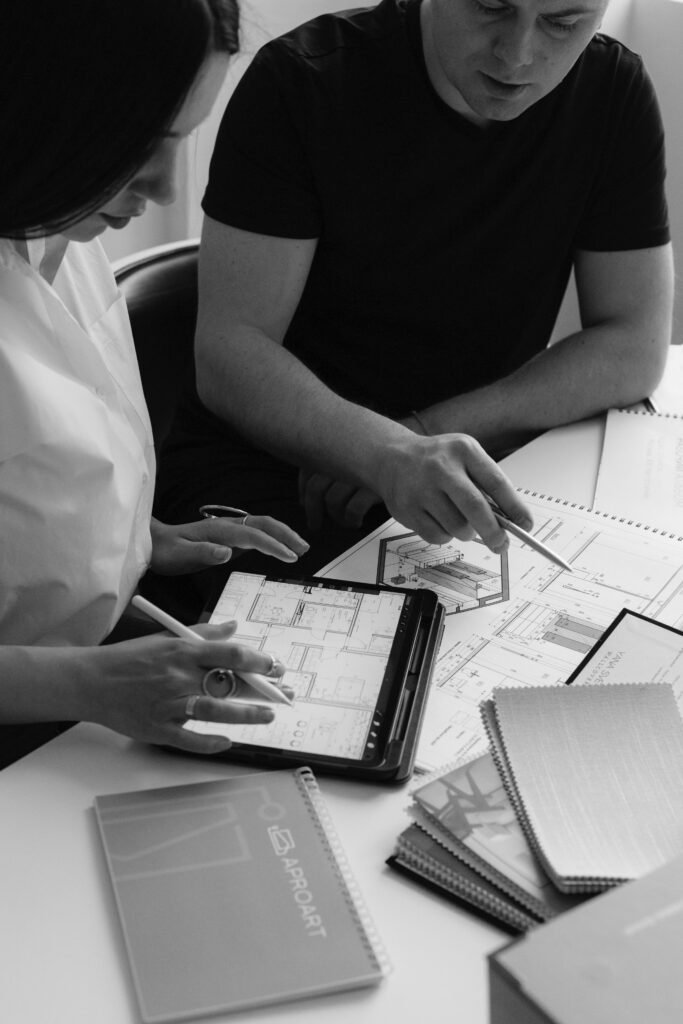
Are you considering renovating your bathroom and in need of some design tips? Look no further! In this article, we will explore the art of bathroom renovation and provide you with valuable tricks to transform your outdated space into a stylish and functional oasis. From clever storage solutions to selecting the perfect color palette, we’ve got you covered. So, get ready to take your bathroom from drab to fab with these expert design tips!

This image is property of images.pexels.com.
Planning Your Bathroom Renovation
When it comes to planning your bathroom renovation, the first step is to set a budget. Renovations can quickly add up in cost, so it’s important to determine how much you are willing to spend before diving into the project. Consider factors such as the size of your bathroom, the extent of the renovation, and the materials and fixtures you wish to incorporate.
Once you have your budget in mind, the next step is to assess your needs. Take a close look at your current bathroom and consider what aspects are functioning well and what needs improvement. Do you require more storage space? Is the lighting inadequate? Are the fixtures outdated? Identifying your needs will help guide your renovation decisions.
Now, it’s time to determine the scope of work. This includes deciding whether you want to do a complete overhaul or focus on specific areas. Are you planning to reconfigure the layout or just update the existing fixtures and finishes? Having a clear understanding of the scope will help you stay focused during the renovation process.
Choosing the Right Design
The design of your bathroom can greatly impact its overall appeal and functionality. First, consider the overall style you want to achieve. Do you prefer a modern and sleek look, or do you lean towards a more traditional or vintage aesthetic? Take inspiration from magazines, websites, and even hotels or restaurants to get a sense of the style that resonates with you.
Once you have a sense of the style, it’s important to optimize floor space. Bathrooms are typically small spaces, so finding ways to maximize the available area is crucial. Consider space-saving fixtures, such as wall-mounted toilets and floating vanities. Incorporating storage solutions that utilize vertical space, such as tall cabinets or shelving units, can also help make the most of your floor space.
When selecting materials and finishes, keep in mind both durability and aesthetics. Choose materials that are resistant to moisture and stains, such as ceramic or porcelain tiles for the flooring and walls. Additionally, consider the color and texture of the materials to create a cohesive and visually appealing design.

This image is property of images.pexels.com.
Maximizing Storage
Storage is often a key concern in bathroom renovations, as it can quickly become cluttered with toiletries, towels, and other essentials. Installing wall cabinets is a great way to add extra storage without taking up valuable floor space. These cabinets can be mounted above the toilet or vanity, providing a convenient solution for keeping items organized and out of sight.
In addition to wall cabinets, utilizing shelving options can also help maximize storage. Open shelves can be installed above the toilet or next to the vanity, offering a place to display decorative items or frequently used items. Another storage option to consider is incorporating built-in storage, such as recessed shelves in the shower or a niche in the wall for holding toiletries.
Enhancing Lighting
Lighting plays a crucial role in any bathroom renovation, as it can greatly impact the overall ambiance and functionality of the space. When enhancing lighting, it’s important to consider three main types: task lighting, ambient lighting, and natural light.
Task lighting is essential for specific activities, such as applying makeup or shaving. It can be achieved through the use of vanity lights or sconces placed on either side of the mirror. Ambient lighting, on the other hand, provides overall illumination for the entire bathroom and can be achieved with ceiling-mounted fixtures or recessed lighting.
Incorporating natural light is ideal whenever possible, as it can create a sense of openness and freshness. Consider adding windows or skylights to bring in natural light during the day. Additionally, frosted glass or sheer curtains can provide privacy while still allowing natural light to filter through.

This image is property of images.pexels.com.
Selecting Fixtures and Fittings
Choosing the right fixtures and fittings is essential for both functionality and style. When selecting a toilet, prioritize functionality and water efficiency. Look for toilets with dual-flush options or ones that are WaterSense certified to minimize water consumption.
When it comes to selecting a bathtub or shower, consider your personal preferences and the available space. If space is limited, a shower stall may be the best option. On the other hand, if you have ample space and enjoy soaking in a tub, consider a freestanding bathtub. For the shower, opt for features such as rainfall showerheads or handheld showerheads for added flexibility.
Faucets and hardware are also important design elements. Choose fixtures that complement the overall style of your bathroom, whether it’s sleek and modern or classic and elegant. Consider finishes such as chrome, brushed nickel, or matte black for a contemporary look, or brass and copper for a more vintage or industrial feel.
Considering Accessibility
When planning your bathroom renovation, it’s important to consider accessibility for people of all abilities. Designing for universal access ensures that your bathroom can be used comfortably and safely by everyone. Some considerations include:
- Installing grab bars near the toilet and shower to provide support and stability.
- Opting for non-slip flooring to reduce the risk of accidents, especially when the floor is wet.
- Creating a barrier-free shower with a curbless entry or a walk-in shower to accommodate individuals with mobility challenges.
By incorporating accessibility features into your bathroom design, you can ensure that your space is welcoming and inclusive for everyone.

This image is property of images.pexels.com.
Ventilation and Moisture Control
Proper ventilation and moisture control are vital for maintaining a healthy and mold-free bathroom. Install a properly sized exhaust fan to remove moist air and prevent the buildup of mold and mildew. Consider factors such as the size of your bathroom and the level of humidity to determine the appropriate fan size.
In addition to exhaust fans, ventilation windows can also help improve air circulation. Windows can be opened to let fresh air in and allow moisture to escape, reducing the risk of mold growth. Make sure the windows are properly sealed and equipped with screens to keep insects out.
Lastly, incorporating moisture-resistant materials into your bathroom renovation can help prevent water damage. Opt for materials such as moisture-resistant drywall, waterproofing membranes in the shower area, and water-resistant flooring to ensure that your bathroom stays in good condition for years to come.
Flooring Options
The flooring you choose for your bathroom renovation should be both functional and aesthetically pleasing. There are several options to consider:
- Tile varieties, such as ceramic or porcelain, are popular choices due to their durability and water resistance. They come in a wide range of colors, shapes, and patterns, allowing you to create a unique design.
- Laminate or vinyl flooring is another option that offers affordability and ease of installation. These materials are resistant to water and scratches, making them suitable for bathrooms.
- For added comfort, you may want to consider heated floors. Electric radiant heat systems can be installed beneath the flooring, providing warmth and luxurious comfort during colder months.
Consider your budget, personal preference, and maintenance requirements when selecting the flooring for your bathroom renovation.

This image is property of images.pexels.com.
Wall and Paint Selection
The walls of your bathroom can greatly impact its overall aesthetic. When choosing paint, opt for durable and water-resistant options. Look for paints specifically designed for high-moisture areas, such as bathrooms, to ensure longevity. Semi-gloss or satin finishes are recommended, as they are easy to clean and can withstand moisture.
Consider exploring different wall finishes to further enhance the design of your bathroom. Textured wall coverings, such as beadboard or wainscoting, can add depth and visual interest. Additionally, tiles or decorative wallpapers can create a focal point or add a touch of luxury to the space.
Creating accent walls is another way to add visual appeal to your bathroom. Select a wall to highlight and choose a bold color or unique pattern to make it stand out. Accent walls can be created with paint, wallpaper, or even a different type of tile than the rest of the bathroom.
Ensuring Proper Plumbing
Proper plumbing is crucial for the functionality and longevity of your bathroom renovation. Understanding the plumbing layout is essential before making any changes. Identify where the main water supply and drainage lines are located to ensure that any new fixtures and pipes can be properly connected.
If your plumbing system is outdated or prone to leaks, consider updating the pipes and fixtures. This will help prevent future issues and ensure that your renovated bathroom functions efficiently. Hire a professional plumber to assess the condition of your plumbing system and make any necessary repairs or replacements.
Before completing your bathroom renovation, it’s important to test for leaks and adequate water flow. Ensure that all fixtures, such as faucets, showers, and toilets, are properly connected and functioning as intended. Run the water for several minutes and check for any signs of leaks or low water pressure. Address any issues before finalizing your renovation project.
A bathroom renovation can be an exciting and transformative project. By carefully planning and considering various aspects such as budgeting, design, storage, lighting, fixtures, accessibility, ventilation, flooring, walls, and plumbing, you can create a bathroom that is not only functional but also reflects your personal style. Enjoy the process of designing and transforming your bathroom into a space that brings you joy and relaxation for years to come.

